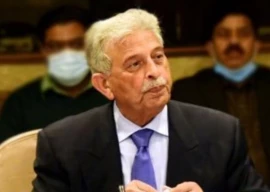
With the killing of George Floyd, police brutalities in India and the Tehkal incident in Peshawar, the notion of police brutality is once again the centre of public discussion. Many scholars have attempted to explain police brutality. For instance, Robert Worden defined it as a range of police actions and practices including use of abusive language; using a threatening tone; and unjustified interrogations aimed at harassing people. But the nub of police brutality, as Albert J Reiss stated in The Police and the Public, is “police use of physical force”.
There is no doubt that it is the part of the police’s job to use force while dealing with certain problems. But it is also necessary to look for and respect the fuzzy line between proper and improper use of force. Practically it rests solely on the judgment of police personnel and how they justify the use of force as “reasonable”. In case of misjudgement, policing becomes nothing but “a mechanism for non-negotiable coercive force employed in accordance with the dictates of an intuitive grasp of situational exigencies”.
Although not based on a strict survey of data, most citizens’ experience with the police in Pakistan happens to be bad. It may be possible because the interaction between police and public is only when the situation is not good. But this doesn’t mean that there is no problem with the police. Certainly, cases like the Tehkal incident are just the tip of the iceberg. This raises the question that why does the police behave brutally?
Several explanations can be given to this milieu under sociological and psychological theories. One probable explanation is that this violent behaviour is because of a violent culture that is inherent in the organisation. In the parlance of police studies, this behaviour has been defined as “police culture”. To understand this, one needs to highlight influence of organisational characteristics on personnel’s behaviour and how these shape individuals’ attitudes. It is unfortunate that in Pakistan police reforms in the past, including for K-P (through Police Act 2017), seem to be guided more by a socio-political approach as they focus on autonomy and “attitude towards public” is stated on briefly in Article 3, without stating ‘how’ that will be ensured. An organisational analytical approach seldom prevails in these reforms. This could be why despite all reforms misuse of police force is not eliminated. Regardless to how well you depoliticise the police or improve recruitment criteria and make the organisation autonomous, it still behaves the same. It still depicts what Glen Wilson calls a “watchman style” rather than a “service style”. Autonomy should not mean unbridled action but should be independent with civil adherence.
Ambitious reforms for police autonomy cannot work well unless the culture is not changed. With an inherent culture of violence, autonomy can significantly increase the chances of corruption.
It is high time for relevant authorities and policymakers to rethink reforms oriented towards improving policing in Pakistan. A good reform is one that is informed by multifaceted approaches addressing the nature of the problem. Meticulous thinking about police culture inherent in the organisation is necessary to produce reforms that can convert this “force” into a “service” that people can rely on; that people would like to avail before taking law into their own hands; that people own proudly rather than avoid fearfully.
Published in The Express Tribune, July 22nd, 2020.
Like Opinion & Editorial on Facebook, follow @ETOpEd on Twitter to receive all updates on all our daily pieces.



























1714024018-0/ModiLara-(1)1714024018-0-270x192.webp)









COMMENTS
Comments are moderated and generally will be posted if they are on-topic and not abusive.
For more information, please see our Comments FAQ